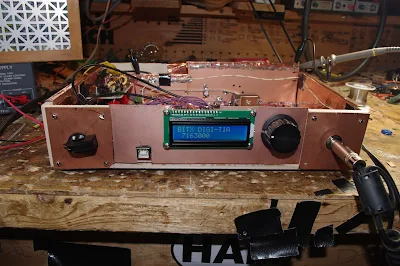SolderSmoke Podcast #177 is available:
13 June 2015
-- PETE JULIANO INDUCTED INTO THE QRP HALL OF FAME
-- Bench Reports: Bicoastal Bilateral Success: A Tale of Two Tias
Only 3 TIA rigs in the world? It depends...
Relay improvements in the BITX Builds
Straightening out amp problems
The many uses of copper foil
No phase noise or bleed-over troubles
Plug-in filters
Adjusting TIA amp gain on RX and TX (too much is not good!)
Getting the BITX to work with the CCI amp
Allison wisely prescribes 3 db pads
Curing hum by moving the power supply (duh!)
-- Farhan's New Minima -- Crying out for an Si5351?
-- Mike KL7R's Web Site is Back (thanks to W8NSA)
-- SolderLex: Rigs or Radios? We go with Rigs
-- A ham rite of passage: Build a Dipole!
-- What does your shack look like at the end of a project?
-- MAILBAG
The CORRECT pronunciation of Belthorn
Multiplication and Division by 4
W8NSA, Vietnam, a Transoceanic and a 9V Battery
Our book: "SolderSmoke -- Global Adventures in Wireless Electronics"
http://soldersmoke.com/book.htm
Our coffee mugs, T-Shirts, bumper stickers:
http://www.cafepress.com/SolderSmoke
Our Book Store:
http://astore.amazon.com/contracross-20













































